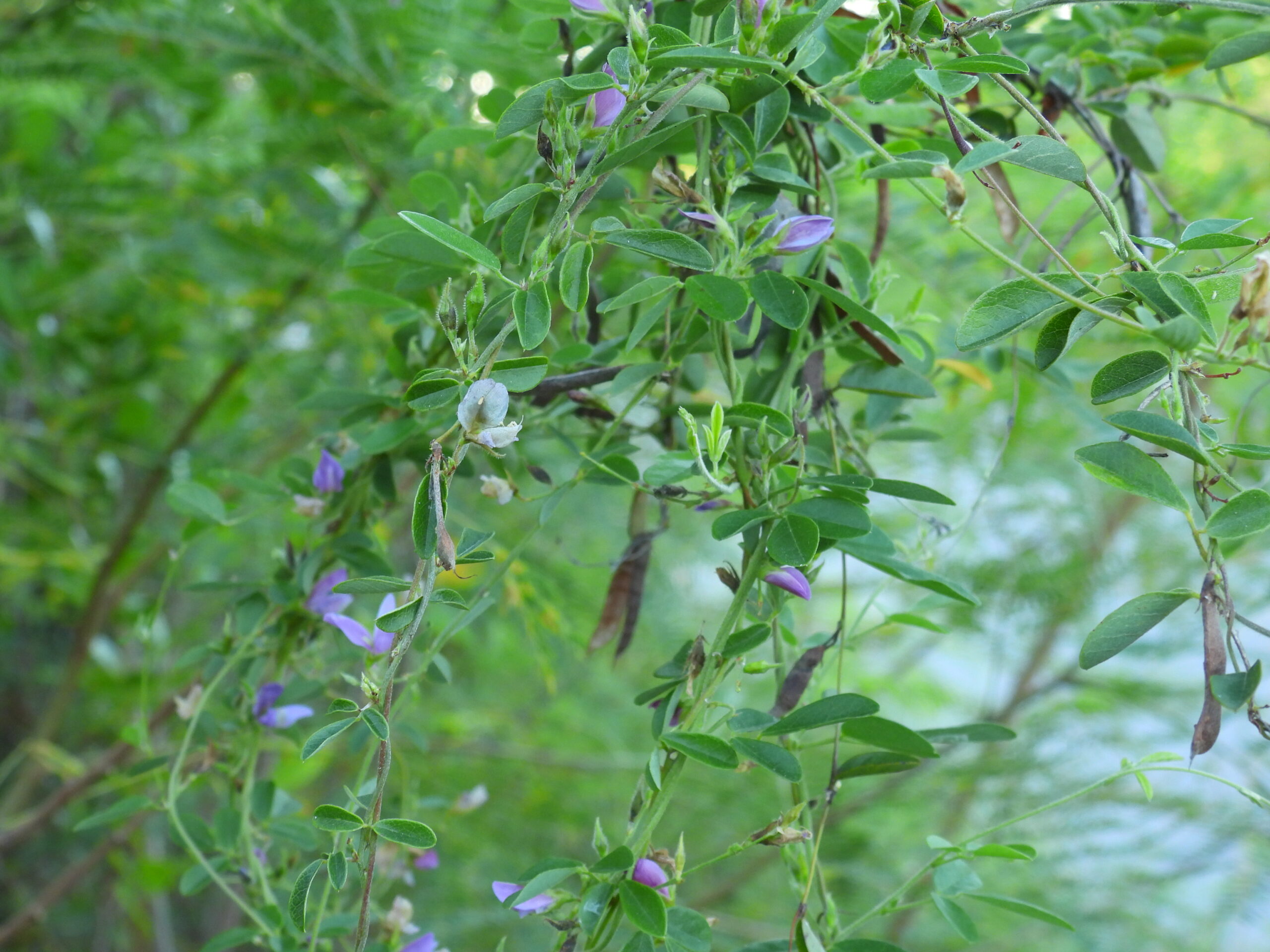Habit Teramnus uncinatus grows as a pubescent, perennial vine with angled stems, growing on shrubs and small trees. The trifoliate compound leaves are arranged alternately with small linear stipules at the petiole base. The 3 leaflets are up to 8 cm in length, linear/lanceolate/ovate with a mucronate leaf apex with an entire margin and is densely pubescent abaxially.
The complete, perfect, zygomorphic flowers are arranged in axillary racemes that are longer than the leaves. The calyx 5 are partially fused, pubescent green sepals forming a tube with the sepal lobes the same length as the tube. The corolla has 5 purple/pink sepals with the upper enlarged to form the banner and the lower 2 fused to form the keel. There are 5 stamens and 5 staminodes. The ovary is superior and has a single locule with numerous seeds. The fruit is a pubescent brown legume up to 5 cm in length at maturity with a beak at a right angle.
Habitat: Teramnus uncinatus grows in the Lucayan Archipelago in Human Altered environments (old fields, yards roadsides) and at the edges of Dry Broadleaf Evergreen Formations – Forest/Shrublands.
Distribution: Teramnus uncinatus occurs throughout the Lucayan Archipelago but is not common. It is native to Mexico, Central and northern South America as well as central Africa and Madagascar.
Medicinal/Cultural/Economic usage: Teramnus uncinatus is not known to be used medicinally in the Bahamas.
